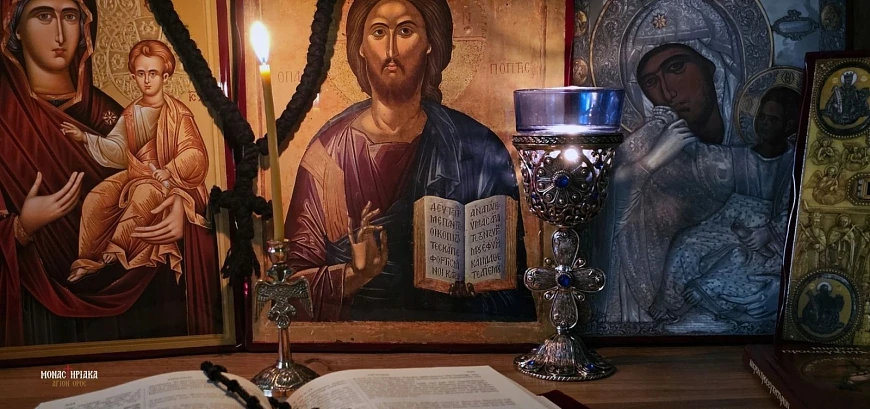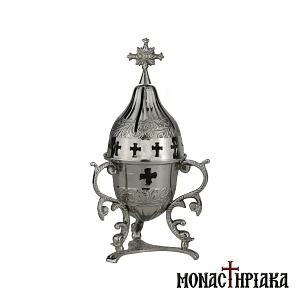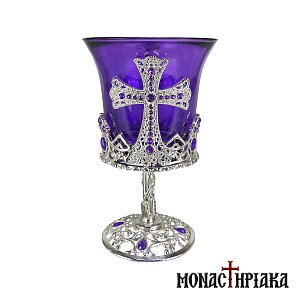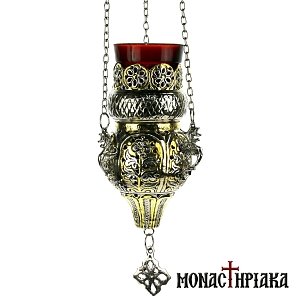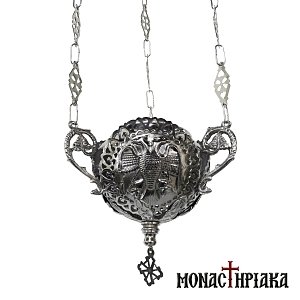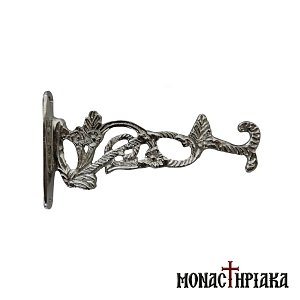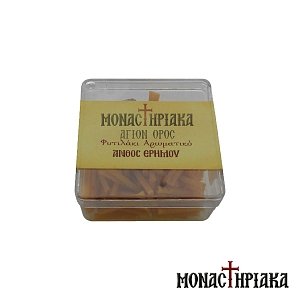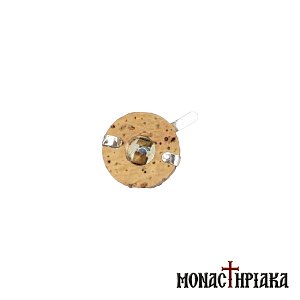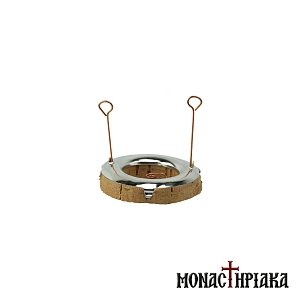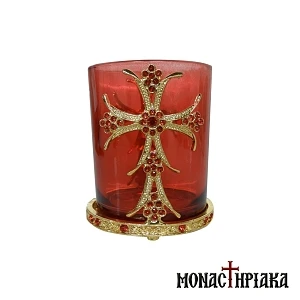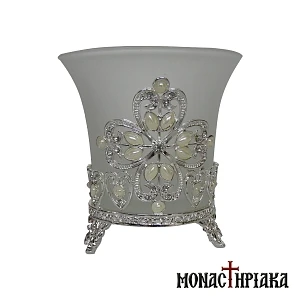How to properly light the vigil lamp at home
In this article you will find important information on preparing and lighting the vigil lamp in your home, as well as mistakes to avoid.
Instructions for lighting the vigil lamp
Properly lighting a vigil lamp requires the right preparation. There are two main methods for filling the lamp with oil and inserting the wick:
1. With water and oil
A common practice is to pour a layer of water into the glass, then add oil, and finally insert the candle holder wick float lamp (cantilithra) with the wick.
Although many prefer this method, it is not particularly effective because as the oil is consumed, the wick may draw up water, causing sputtering and reduced burning.
2. With salt or pebbles
A second method is to place salt or well-washed small rocks at the bottom of the glass. Then, the oil is added.
This prevents the candle holder (cantilithra) and wick from resting directly on the glass bottom as the oil runs low and heat may cause cracking. Thus, the candle holder remains stable and upright.

Find here: Mount Athos Wick Float for Vigil Lamp - Cantilithra
Find here: Small Wick Float for Vigil Lamp – Candle Holder Cantilithra
Step-by-Step guide to lighting the vigil lamp
Information for correct use of the vigil lamp
To properly light the vigil lamp, it is important to follow the steps outlined below.
1. In a small bowl or in a special glass cup for oil lamp combine oil and water in a 4:1 ratio. That means that ¼ of the container should be filled with water and ¾ with olive oil. This ratio allows for prolonged burning.
2. Thread the wick through the hole in the cantilithra so that only ¼ of the wick protrudes. This helps maintain a low, steady flame.
3. Carefully, place the vigil lamp into the oil surface, then light it. Do not ignite the vigil lamp before placing it in the oil, as it may tip over and cause damage.
4. Once the wick is consumed, use tongs to remove the holder.
Find here: Orthodox Beeswax Wicks and Cork Float
Do not dispose of used vigil lamp remnants with regular household waste. Instead, collect them in a small container and, once a sufficient amount has accumulated, burn them outdoors or mix them into potted soil.
Find here: Orthodox Vigil Oil Lights - Kandili from Mount Athos
Why the vigil lamp smokes
Many faithful find their home vigil lamp smoking, creating an unpleasant atmosphere. Common causes include:
1. Usage of unsuitable oil
One of the main reasons smoke may be produced during the burning of an oil lamp, is the use of inappropriate types of oil, such as vegetable oil, corn oil, cottonseed oil, or even used cooking oils, which do not burn cleanly and tend to produce excessive smoke.
For a steady, clean flame, use high-quality olive oil, which burns without smoke. Olive oil is the most appropriate choice for vigil lamps, not only for practical reasons but also because of its deep connection to our religious tradition.
The Lord Jesus Christ prayed in the Garden of Gethsemane, a fact that lends profound spiritual symbolism to the use of olive oil. In this way, the church or our home, illuminated by the burning oil-candle, becomes a new "garden", where Divine Mercy and spiritual enlightenment are spread.
2. Using water instead of salt or pebbles
To prevent smoking from a vigil lamp, place salt or well-washed pebbles at the base of the cup instead of water.
3. Low-quality wax containers (luminia) without beeswax
Oftentimes, the small wax containers (commonly referred to as 'luminia') used in vigil lamps may produce smoke, especially when they are not made from pure beeswax. To minimize the likelihood of smoke, it is advisable to use luminia crafted from genuine beeswax, particularly if you have noticed that your vigil lamp frequently emits excessive smoke.
Finally, a smaller flame helps reduce smoke. For this reason, before lighting the vigil lamp, ensure that only a small portion of the wax container extends above the cantilithra.
Find here: Cork Floats and Wicks made of Beeswax
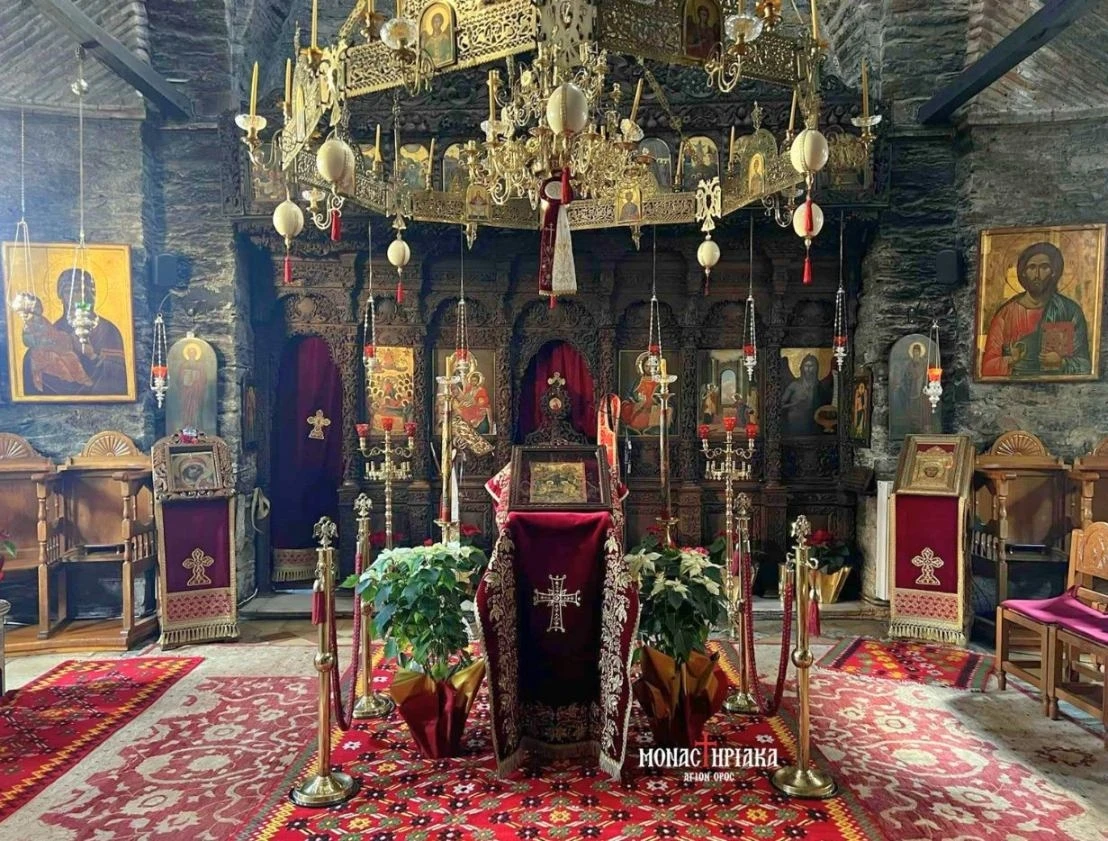
Why the flame of the vigil lamp flickers
There are many factors that may cause the flame of a vigil lamp to flicker. The most common cause is the air flows, which may result from open windows or doors, the movement of people near the lamp, or the operation of air conditioning or fans within the space.
Another reason the flame of a vigil lamp may flicker is an insufficient oil supply. Ensure that the oil used is light and flows properly through the cantilithra, allowing it to draw the appropriate amount and maintain a steady, even burn.
Read also: Orthodox Vigil Lamp: What is the meaning and the symbolism
Home vigil lamp safety tips - What to keep in mind when using a vigil lamp at home
For the safe use of a vigil lamp in the house, consider the following guidelines:
1. Usage of Metal Cover
The vigil lamp should be equipped with a metal cover featuring holes to shield the flame and prevent the risk of fire or the projection of embers.
2. Selecting an appropriate location for the vigil lamp
Place the vigil lamp in an area that receives natural light and is well-ventilated. Avoid positioning it near open windows, air conditioners, or fans, as air flows can disturb the flame. For added protection, you may use a glass chimney.
3. Protection of the placement surface
Do not place the vigil lamp on or near fabrics such as tablecloths or curtains, as these can easily catch fire. Choose a stable, non-flammable surface.
4. Keep out of reach of children and pets
It is important that the vigil lamp is kept out of reach of small children and pets to prevent any risk of accidents.
5. Cleaning and Oil Renewal
It is not necessary to clean the lamp’s container after each use. However, a thorough cleaning is recommended after every two or three refills. Allow the wick to fully consume the oil before refilling, and never add oil while the lamp is lit, as this poses a risk of sudden ignition.
Find here: Orthodox Wicks for Vigil Oil Lamp - Kandili

